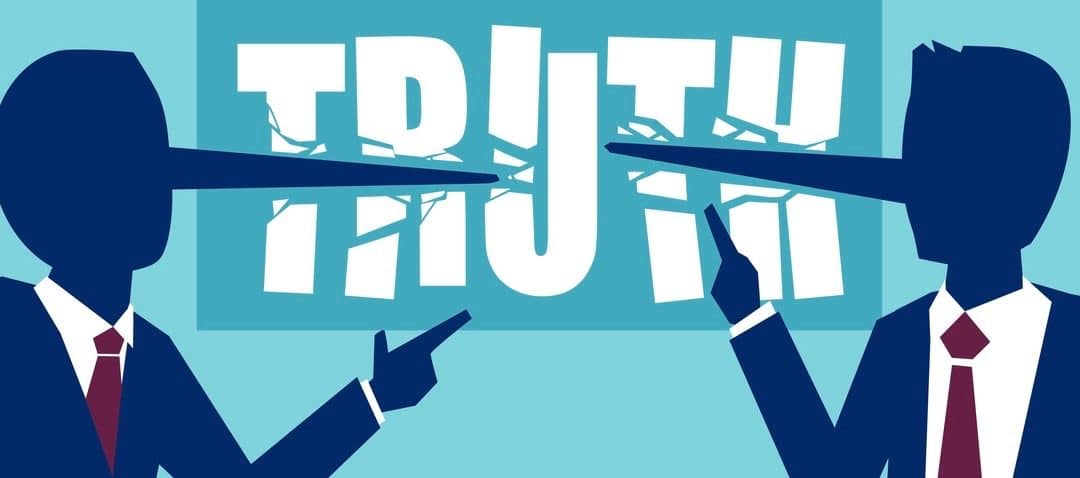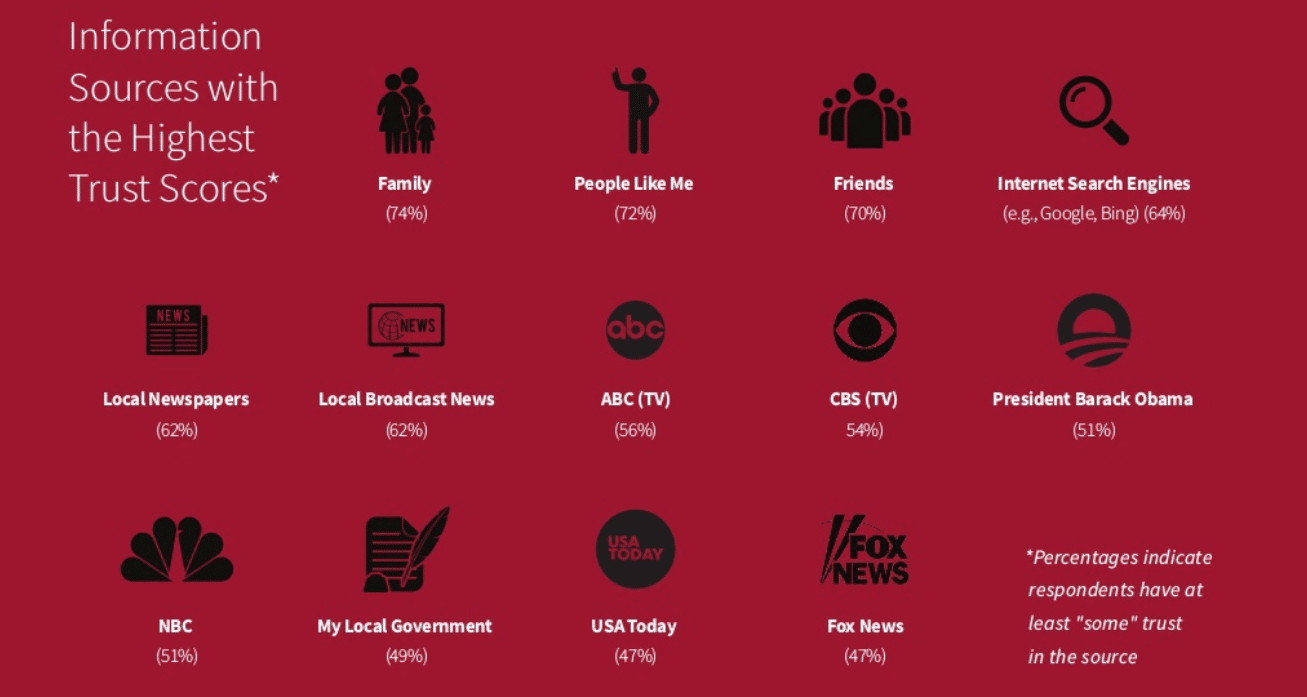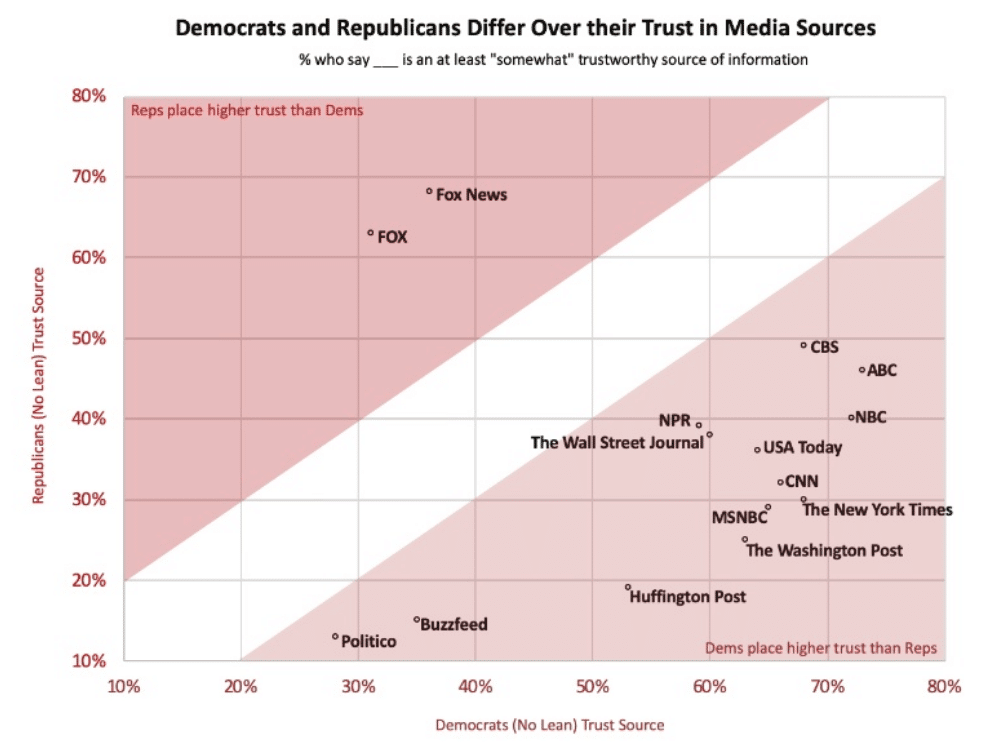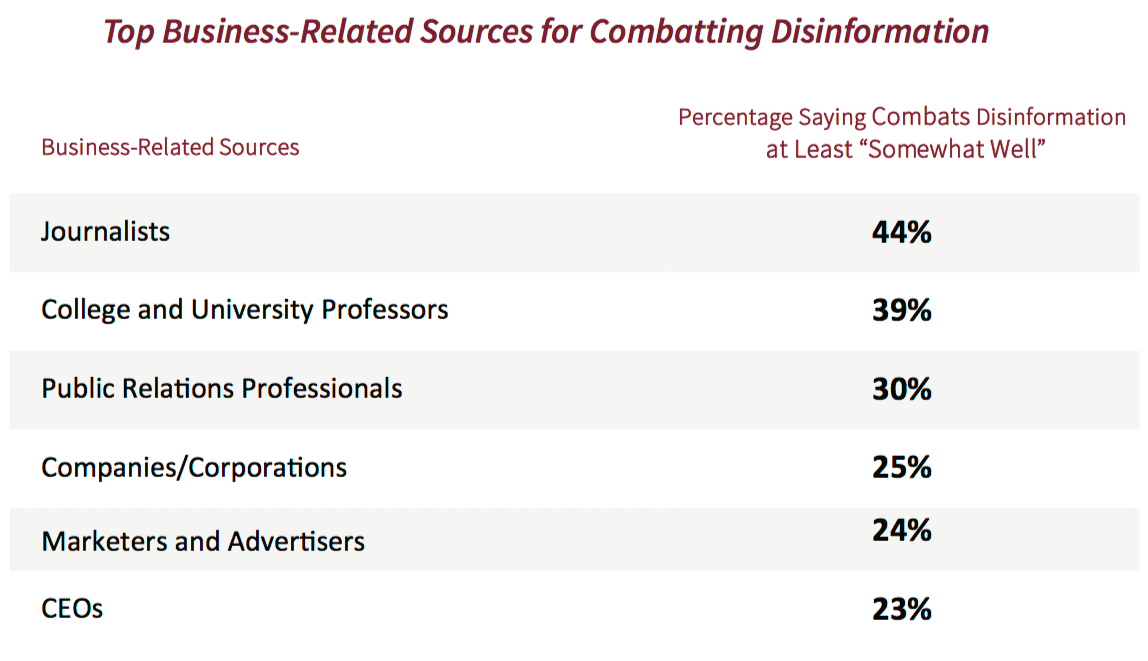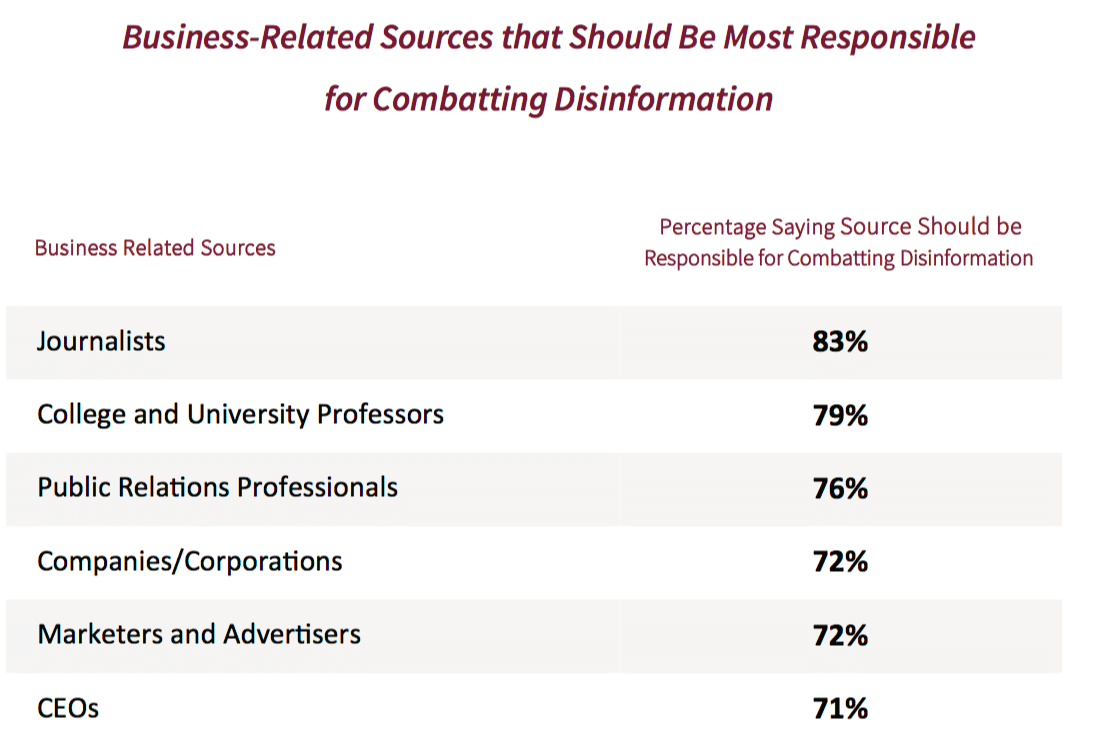Comms pros are fully aware that there’s a media-trust crisis sweeping the nation, but it might be surprising to find out that most Americans think the PR industry is as much a culprit as any other entity for disseminating false information.
There’s actually plenty of blame to go around, but industry-rattling new research from the Institute for Public Relations found that marketers/advertisers (65 percent) and PR professionals (58 percent) were deemed to be “very” responsible for spreading disinformation, defined as “deliberately misleading or biased information.”
For its newly released 2019 Disinformation in Society Report, the Institute surveyed 2,200 adults with Morning Consult to determine the prevalence of disinformation, who is responsible for sharing disinformation, the level of trust in different information sources, and the parties responsible for combatting disinformation.
Among the revelations is that only one in four Americans (26 percent) had at least “some” trust in PR practitioners to provide accurate news and information.
“One surprising finding was how significant of a problem both Republicans and Democrats rated disinformation,” said Dr. Tina McCorkindale, APR, president and CEO of the Institute for Public Relations, in a news release. “Unfortunately, only a few organizations outside of the media literacy and news space devote resources to help fix it, including many of the perceived culprits for spreading disinformation.”
More than half (51 percent) of respondents said they encounter disinformation at least once a day, while 78 percent said they see it once a week. Four in five adults (80 percent) said they are confident in their ability to recognize false news and information. Additionally, nearly half of Americans (47 percent) said they “often” or “always” go to other sources to see if news and information are accurate.
Trustworthiness of sources
Regarding the trustworthiness of sources, the report finds people are the most trustworthy sources of information: family (74 percent), people like me (72 percent) and friends (70 percent).
Of media sources, local newspapers (62 percent) and local broadcast news (62 percent) fared well for perceptions of trustworthiness and the ability to provide accurate news and information.
Among newspapers, USA Today (47 percent) was viewed most often as a trusted source, followed closely by The New York Times (46 percent), The Wall Street Journal (44 percent), and The Washington Post (42 percent).
“The decline of local newspapers and cuts to journalism has created ‘news deserts,’” said Steve Cody, founder and CEO of Peppercomm and chair of the IPR Board of Trustees, in the release. “According to Dr. Penelope Abernathy at the University of North Carolina at Chapel Hill, 171 counties do not have a local newspaper and half of all counties only have a weekly newspaper. As one of the most trusted sources of information, not having sufficient local coverage is problematic.”
Political differences also play a role in the trustworthiness of sources. Democrats are more likely to trust mainstream media sources than Republicans, showcasing a wide gap between the two political parties. Compared to Republicans, Democrats were more likely to trust The New York Times (+38 percentage points), The Washington Post (+38 percentage points), and MSNBC (+36 percentage points). The exception is Fox News as Republicans were more likely to trust than Democrats (+32 percentage points).
Responsibilities for spreading and combatting disinformation
Forty percent of respondents deemed President Trump to be “very responsible” for spreading disinformation (40 percent), along with fake accounts (55 percent) and politicians in general (45 percent). However, there were differences between the two major political parties; nearly half of Republicans (45 percent) said President Trump was at least “somewhat” responsible, compared to 72 percent of Democrats.
For social media platforms, 64 percent of respondents said Facebook was “somewhat” responsible for spreading disinformation; more than half also said Twitter (55 percent).
Among groups and individuals trying to combat disinformation in the news, Americans give the most credit to “people like me” (55 percent), the Supreme Court (51 percent) and fact-checking websites (49 percent). Other groups and individuals considered to be doing at least “somewhat well” in their efforts are local newspapers (48 percent), TV stations (48 percent) and radio news (46 percent). The lowest scores for their efforts to combat disinformation in the news media go to CEOs (23 percent) and celebrities (23 percent).
Gaps existed between whom respondents thought should be combatting disinformation and how well they were actually combatting it. Seventy-two percent of Americans believe President Trump should be most responsible for combatting disinformation, but only 36 percent say he is doing at least “somewhat” well in combatting it. Similar gaps were found with the government (72 percent vs. 33 percent) and Congress (67 percent vs. 29 percent). Journalists saw a smaller gap as 64 percent said they should be responsible for combatting disinformation, but 44 percent said journalists were helping to combat it.
“Overall, respondents said every individual or group is responsible for helping combat disinformation,” said McCorkindale. “At least one-third deemed every source we listed as being ‘very responsible’ for combatting information, including ‘people like me’ and ‘people not like me.’”
This poll was conducted between March 19-24, 2019 by Morning Consult with a national sample of 2,200 adults. The interviews were conducted online, and the data were weighted to approximate a target sample of adults based on age, educational attainment, gender, race and region. Results from the full survey have a margin of error of plus or minus two percentage points.

